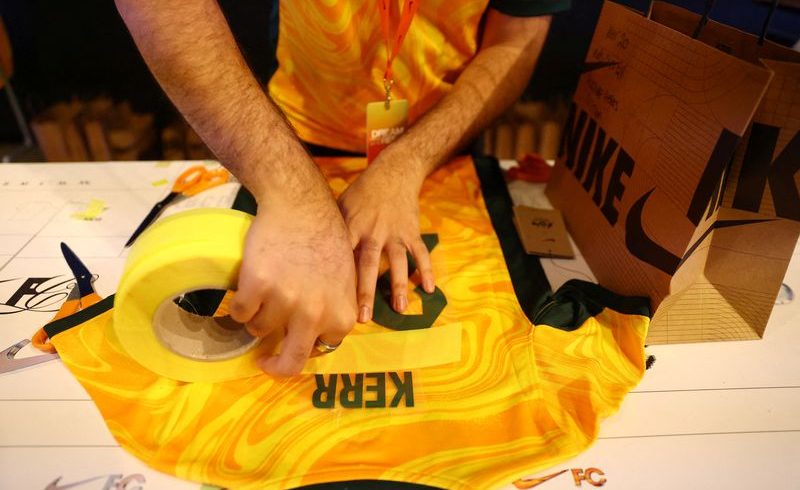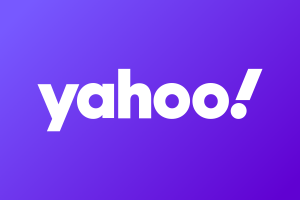
By Helen Reid and Amy Tennery
LONDON/AUCKLAND (Reuters) – The unpredictability of the Women’s World Cup, with the U.S. knocked out early and a first-time champion assured, is forcing major global marketers such as Adidas and Nike to move fast to adapt to shoppers’ quick shifts in preferences and demand.
The tournament in Australia and New Zealand promises to be among the most popular standalone women’s sporting events ever held, with FIFA expecting viewing figures of some two billion, despite time zone differences that make it difficult for many Europeans and Americans to tune in.
Adidas and Nike and retailers like DICK’S Sporting Goods and Fanatics have made significant investments in merchandise. Total sponsorship value grew to at least $349 million, from $342 million in 2019, according to GlobalData, with many brands aligning themselves with themes of women’s empowerment.
At DICK’s, where 76 clothing and products tied to the 2023 U.S. Women’s National Team were available online on Monday, more than two-thirds are discounted by 25% to 35%, including jerseys, tee-shirts and hoodies, according to a check of its website.
Nike’s marketing ahead of the Women’s World Cup featured a football fan telling her father that “the competition is better than ever,” with cameos from a roster of past and current stars, including U.S. players Megan Rapinoe and Alex Morgan, French player Grace Geyoro, and Barcelona forward Asisat Oshoala.
The retailer also released a collaboration with designer Martine Rose worn by the United States Women’s National Team ahead of their first match. The collection included tailored pieces such as trousers, a suit jacket and a trench coat featuring the Nike swoosh, along with a slip-on mule resembling a football cleat.
A release from Nike stated that the collection “dissolves the boundaries of men and women’s football styling,” and most pieces are sold out on the designer’s website.
Story continues
Overall for Nike, which sponsors the U.S., England, and others, only 8% of women’s team products have sold out thus far during the tournament, according data collected by Centric Pricing and Refinitiv. That’s down from 13% of Nike’s women’s team products which sold out during the same tournament in 2019, the data shows.
At rival Adidas, which sponsors Sweden and Spain– the teams that go head to head in Tuesday’s semi-final– 21% of women’s team products have sold out so far over this year’s tournament, up from 8% in 2019.
Adidas doubled its production of Germany women’s team jerseys for this World Cup, compared to the 2019 tournament, and was still on the verge of selling out when the team fell out of the running early. “That tells you something about the exponential growth of the sport,” said Adidas spokesman Jan Runau.
FANBASE DRAWS BRANDS
One in three fans of women’s soccer are new to soccer full stop, according to Yvonne Henderson, CEO of UK-based industry association Women In Football. “The fanbase is unique, it’s diverse, it’s quite youthful and it has strong progressive values,” she said.
For that reason, marketers must bear in mind the risk that the growing fanbase could see their support for women’s soccer as disingenuous. “Their message has to come off as sincere, and must be backed by action and long-term commitment as opposed to just 30 seconds of bluster that ends when the event is over,” said Bob Dorfman, creative director at Pinnacle Advertising.
Nike, for example, sponsor of England’s Lionesses, faced criticism from goalkeeper Mary Earps for not producing a replica goalkeeper jersey. Adidas, which does not produce women’s goalkeeper jerseys for the teams it sponsors either, said that was a mistake, with CEO Bjorn Gulden adding that the whole industry is on a “learning curve”.
French telecom company Orange’s World Cup advertisement seeks to directly challenge the notion that women’s soccer is less skilful or exciting than the men’s game, while Adobe’s ad with Germany’s Bayern Munich women’s team includes a voiceover saying: “Our game is proudly different.”
To recognize the impact grassroots teams have in creating excitement about women’s soccer, Adobe’s ad also featured London-based community women’s soccer clubs Peaches FC and Baesianz FC, said Sabina Strasser, Senior Director, Brand Experience EMEA at Adobe.
Sporting goods retailer Fanatics has more than 475 U.S. women’s team products for sale this year, up from about 175 in 2019, the company told Reuters. Overall, in the month leading up to the start of this year’s tournament, sales of women’s soccer products on Fanatics were up more than 80% compared to the last Women’s World Cup in 2019.
But since the surprise early exit of the two-time champions, it had to change tack by promoting merchandise that isn’t specifically tied to the U.S. team. As of Monday, the generic Adidas Women’s World Cup soccer ball was among its top sellers in FIFA World Cup Gear.
(Reporting by Amy Tennery in Auckland, Sheila Dang in Dallas, Texas, and Kate Masters in New York.; Editing by Shri Navaratnam)






